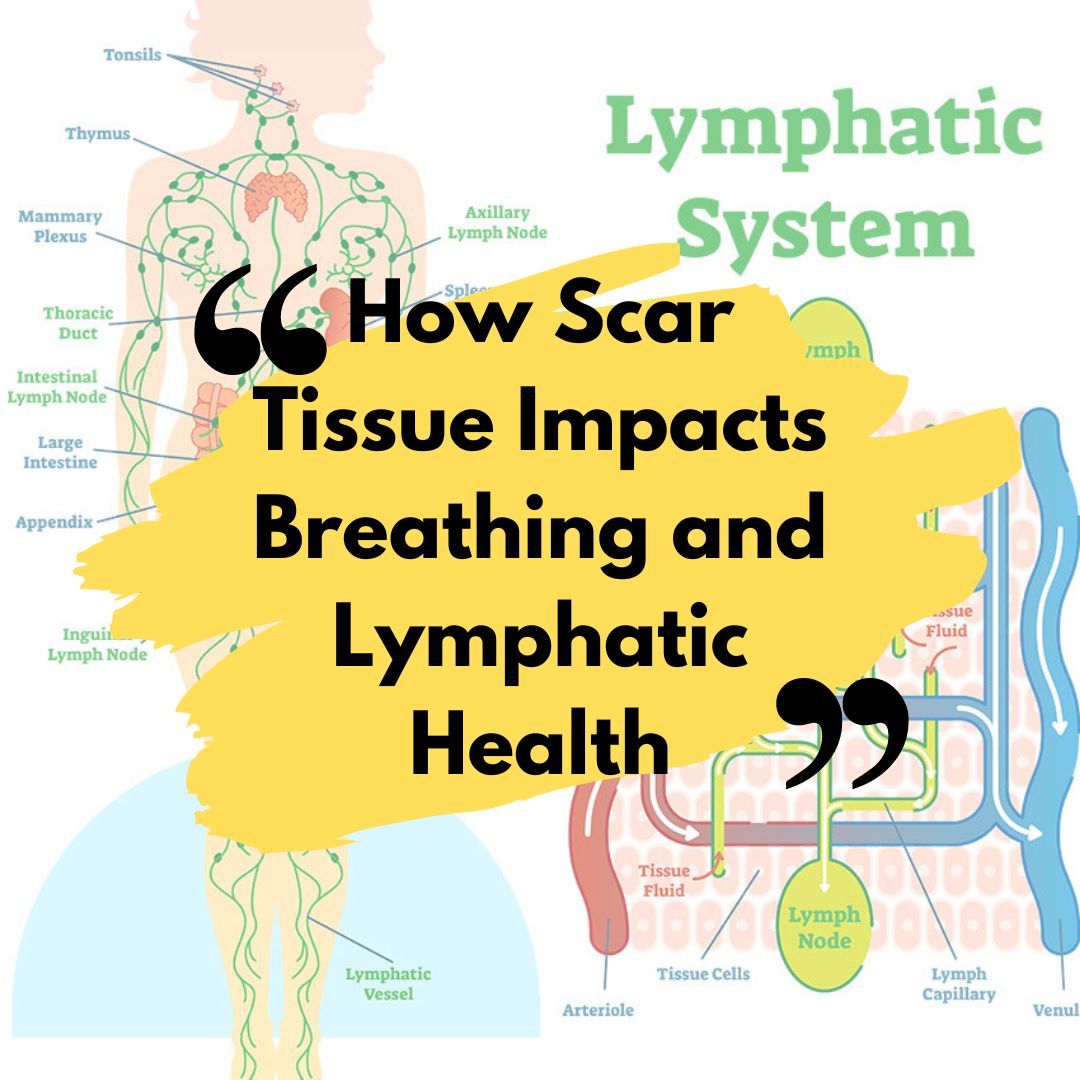Scar tissue from surgeries or conditions like endometriosis can disrupt your breathing patterns and lymphatic drainage. Here’s how and what you can do about it.
Breathing Patterns and Scar Tissue
Scar tissue can limit the movement of your diaphragm and rib cage, leading to shallow breathing. This restriction forces you to use neck and upper chest muscles more, causing tension and poor oxygen delivery to your body.
Lymphatic Drainage System
The lymphatic system keeps fluid balance, filters out toxins, and supports immunity. Scar tissue can block lymphatic pathways, causing fluid build-up, swelling, and a weakened immune response. This is especially true for scars on the abdomen or chest.
Why Symptoms Vary
Symptoms differ based on:
Scar Location: Abdominal and chest scars are more likely to affect breathing and lymphatic drainage.
Scar Size and Depth: Larger and deeper scars cause more problems.
Individual Healing: Some people develop denser scar tissue, leading to more issues.
Why Scar Mobility Matters
Mobile scars allow muscles and tissues to move better, reducing pain and dysfunction. This mobility leads to better flexibility, breathing, and lymphatic flow.
Benefits of Caring for Scar Tissue
Improved Muscle Feedback: Better muscle communication makes them stronger and more coordinated.
Freer Diaphragm: A free-moving diaphragm supports deeper, more efficient breaths.
Better Breathing Patterns: Improved breathing patterns enhance oxygen delivery and overall respiratory health.
Enhanced Vagal Tone: Proper breathing stimulates the vagus nerve, helping with stress management, digestion, and overall well-being.
Self-Care Techniques: Dry Brushing and Guasha
Dry Brushing:
How It Works: Use a natural bristle brush to gently brush your skin towards your heart. This stimulates lymph flow and improves blood circulation.
Benefits: Enhances lymphatic drainage, reduces swelling, and promotes skin health.
Guasha:
How It Works: Use a smooth-edged tool to scrape the skin with gentle pressure. This increases blood flow and breaks down adhesions.
Benefits: Releases scar tissue, improves mobility, and boosts muscle feedback to the brain.
Visualizing Scar Tissue and Fluid Stagnation
Think of scar tissue as a traffic jam. Just like cars stuck in traffic, fluids get backed up around thick scars, leading to a build-up of waste. Techniques like dry brushing and guasha clear this “traffic jam,” allowing fluids to flow freely again.
Acidic Body and Malabsorption
When the body is under stress from restricted lymph flow and poor breathing, it can become more acidic. This acidity can lead to malabsorption of nutrients, as the digestive system doesn’t function optimally. Proper scar care helps restore balance, promoting better digestion and nutrient absorption.
Practical Tips
Dry Brushing: Do this daily before showering with gentle strokes towards your heart.
Guasha: Use 2-3 times a week with enough oil or lotion to avoid skin irritation.
Research Support
Lymphatic Function: Mechanical stimulation like massage promotes lymphatic flow and reduces swelling.
Dry Brushing: Stimulates the lymphatic system, enhancing immune function and detoxification.
Guasha: Improves blood circulation and reduces pain by breaking down adhesions.
By caring for scar tissue, you can improve your breathing, lymphatic health, and overall well-being. Implementing these practices can lead to better health and quality of life.


Comments
One response to “How Scar Tissue Impacts Breathing and Lymphatic Health”
[…] Read how How Scar Tissue Impacts Breathing and Lymphatic Health […]